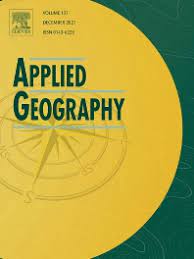
Abstract
"Cumulative accessibility measures are the most-used accessibility metric and indicate the number of opportunities reached within a given travel time threshold. However, these measures require an ad-hoc choice of a single travel time threshold, which can influence the conclusions of transport project evaluations and equity analyses. In this paper, we introduce the time interval cumulative accessibility measure, a new metric that mitigates the impacts of arbitrary choices of trip duration on cumulative accessibility analyses while preserving computation and communicability advantages. The proposed indicator estimates the average (or median) number of opportunities that can be reached considering multiple minute-by-minute cutoffs within a given travel time interval. We demonstrate the new metric in a case study assessing how a planned subway expansion could impact employment accessibility in Fortaleza, Brazil. Using sensitivity analyses with Monte Carlo simulations, we show that the proposed metric makes the results of accessibility estimates and equity analyses significantly less sensitive to ad-hoc methodological choices while yielding results that are very similar to those obtained with traditional threshold-based measures. Future accessibility-oriented research and planning could benefit from the way in which the proposed time interval cumulative opportunity measure provides more robust accessibility estimates without compromising the communicability of results."